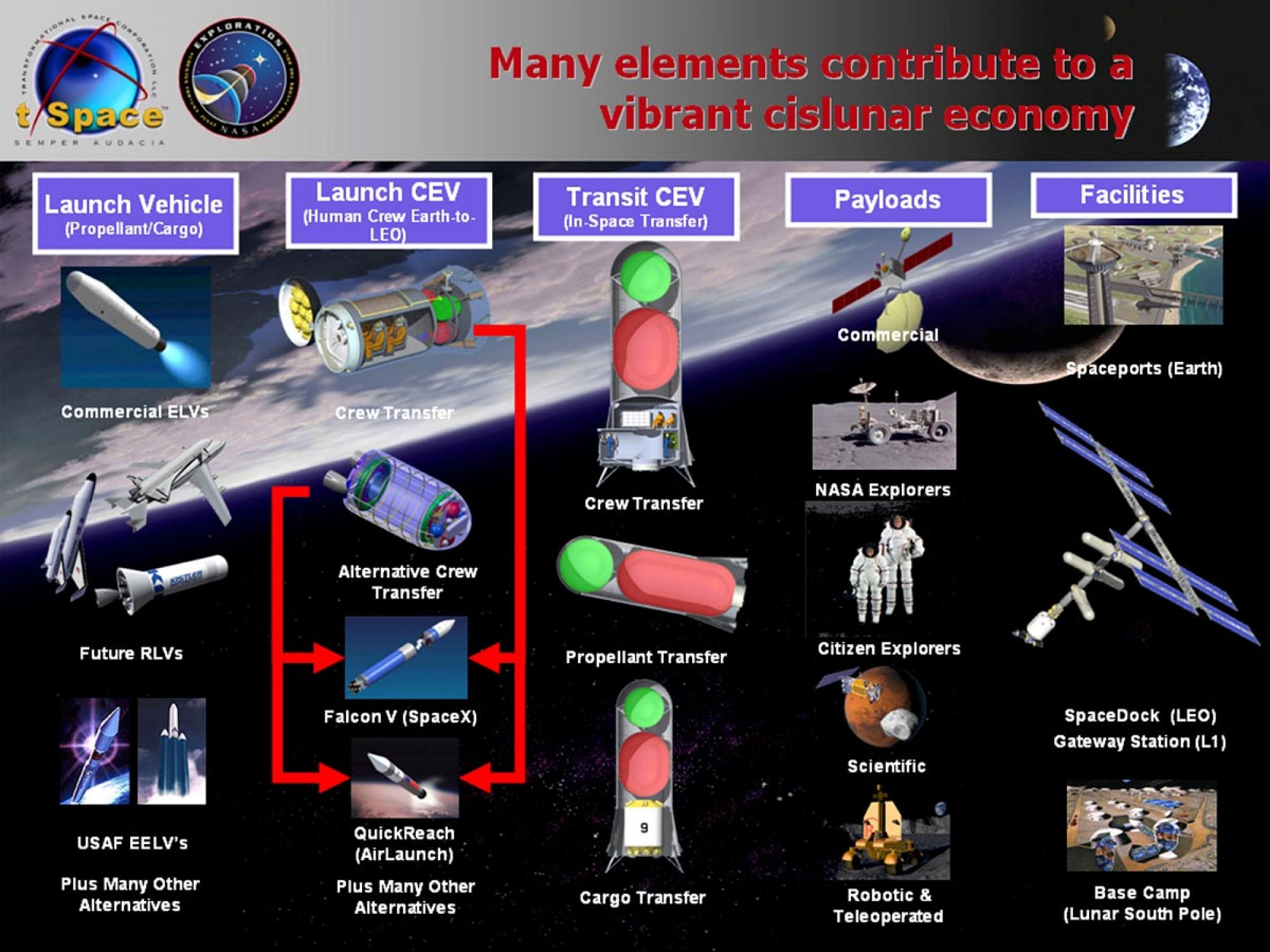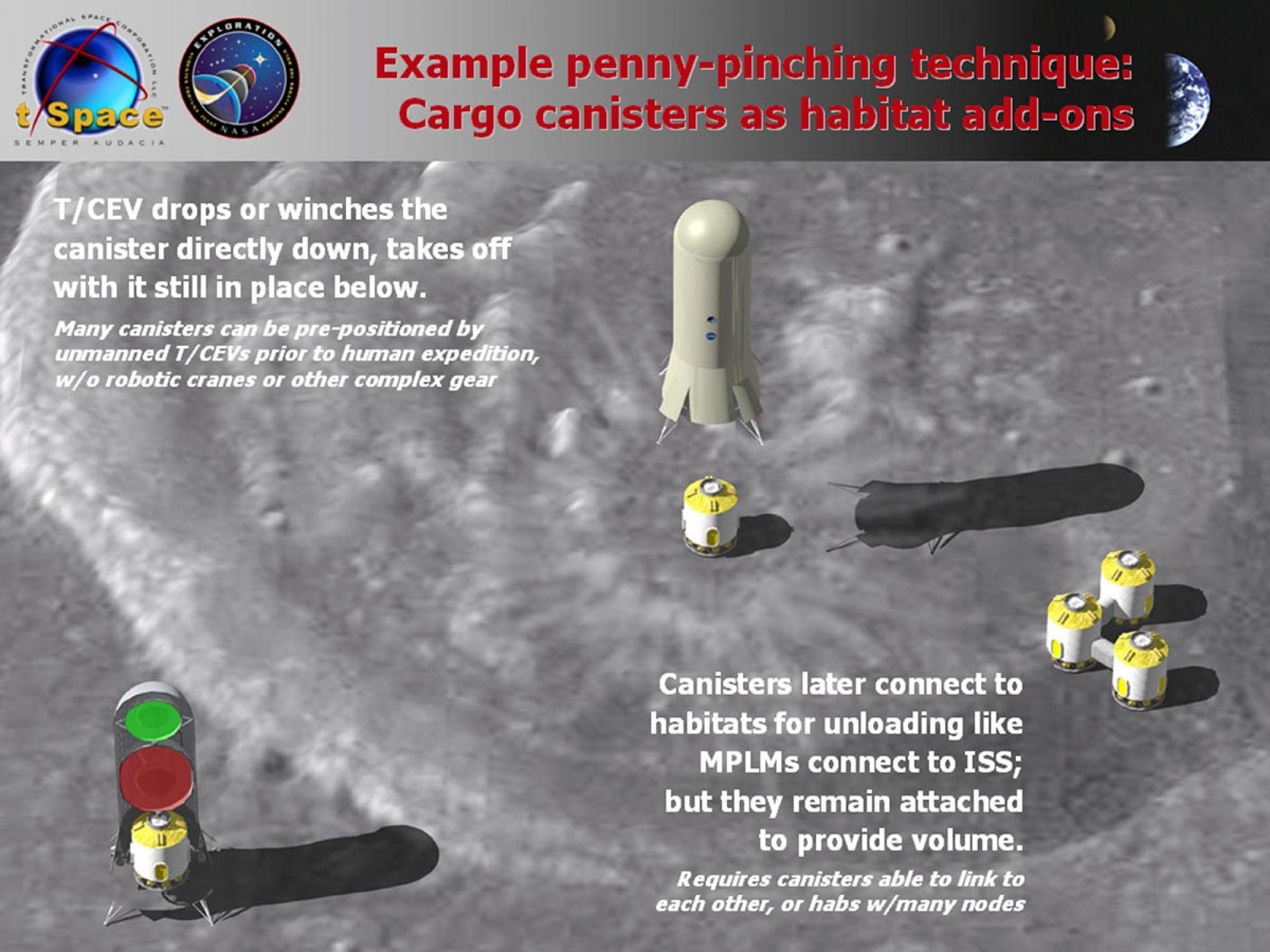Thoughts on the Design of SpaceX’s Mars Spacecraft
We’re just under a week away from SpaceX’s session at IAC 2016 where Elon Musk will unveil (at least some of) their architecture for their Mars ambitions. The bulk of the hard details we know about the architecture came from an AMA that Musk did over a year ago—single core, reusable first stage, massive spacecraft as the upper stage and EDL vehicle (for both Mars and Earth), 100 metric tons of useful payload to the surface of Mars (eventually 100 people), all powered by Raptor engines, with 230 metric tons of thrust each. We’ve even heard that the first Raptor has been shipped to McGregor for testing.
I talked extensively this week on the podcast about what we know, what we expect to find out, and what I hope to see in their architecture (namely Red Dragon-based ISRU and artificial gravity demonstrators). Possibly the biggest detail we don’t yet know is what the spacecraft will look like.
My baseline expectation is a scaled-up Dragon 2. SpaceX typically likes to refine a design, then scale up from there. They started with the Falcon 1, then planned to go to the Falcon 5 (although it was skipped), currently fly the Falcon 9, and will be putting three cores together to make the Falcon Heavy, which will be flying soon™. That’s the most visible example of their mindset, but it permeates throughout their overall strategy.
For that reason, it makes sense to me that they’d go with something that flies like Dragon 2. They’re going to be getting a lot of EDL practice with Red Dragon over the next decade, so it’d make sense to take advantage of that experience and apply it to the bigger spacecraft.
But maybe that’s not the best layout for a much larger spacecraft like we’ll see next Tuesday. There might be a way to design the spacecraft that would lead to a better layout, better functionality for payload, and better performance for atmospheric entry. And there are some good insights to be had about that design tucked away in a presentation from 2004.

Way back in the days of the Vision for Space Exploration, t/Space won a contract to develop an architecture for lunar exploration. In their presentation outlining their architecture (PDF, 6.9MB), you’ll find the slide above which shows some initial designs and system configurations. In addition to the inclusion of SpaceX in their plans some 12 years ago, you’ll also see the designs for the Transit crew vehicle. It’s a biconic-ish design with landing legs, engines angled outward, and a few configurations (crew, cargo, and propellant).
These spacecraft would be capable of propulsive descent to the lunar surface and nose-first atmospheric entry back at Earth (or elsewhere…). In the presentation, there are even mentions of refueling via the tanker configuration. All of these pieces start to sound familiar. Now obviously, the t/Space design is much smaller than what SpaceX will be going for, but scale it up in your mind and consider the advantages this design brings and how those may fit in with SpaceX’s plans.
First off, a biconic design would have a higher lift-to-drag ratio, which would be helpful for atmospheric entry, both at Mars and back at Earth. It would also feature engine positioning similar to that of Dragon 2—replacing the eight SuperDraco engines with Raptors. That means a lot of the Dragon 2 landing experience would maintain relevancy.
The layout also has huge advantages for cargo or habitats, as well. It keeps the cargo and/or egress interface safely tucked away between the first and second stages on launch, and at the tail end of the spacecraft on entry. That means you can optimize that interface’s design for its role without worrying about integrating it with heat shielding, fairings, or other aerodynamic surfaces. It also means you can leave the payload behind entirely on the surface, as seen in the t/Space presentation, without a complex system.

No cranes or winches to bring payload down from way up at the top of the spacecraft, no long ladders, no worries about aerodynamic surfaces. Clean, easy access to payload, with the ability to leave your 100 metric tons of payload on the surface. This would be great for habitats as shown by t/Space, but would also be great for supplies and equipment like pressurized rovers, ISRU hardware, nuclear reactors, and other necessary infrastructure.
We’ll find out next week which direction SpaceX will go, but this design—which they’ve clearly seen before, as their name was included in the presentation—seems to offer some great advantages for their plans. I’ll be following the IAC closely, tweeting my way through all that happens, and will be joining forces with Jake from WeMartians for some crossover episodes of our podcasts.
 Main Engine Cut Off
Main Engine Cut Off